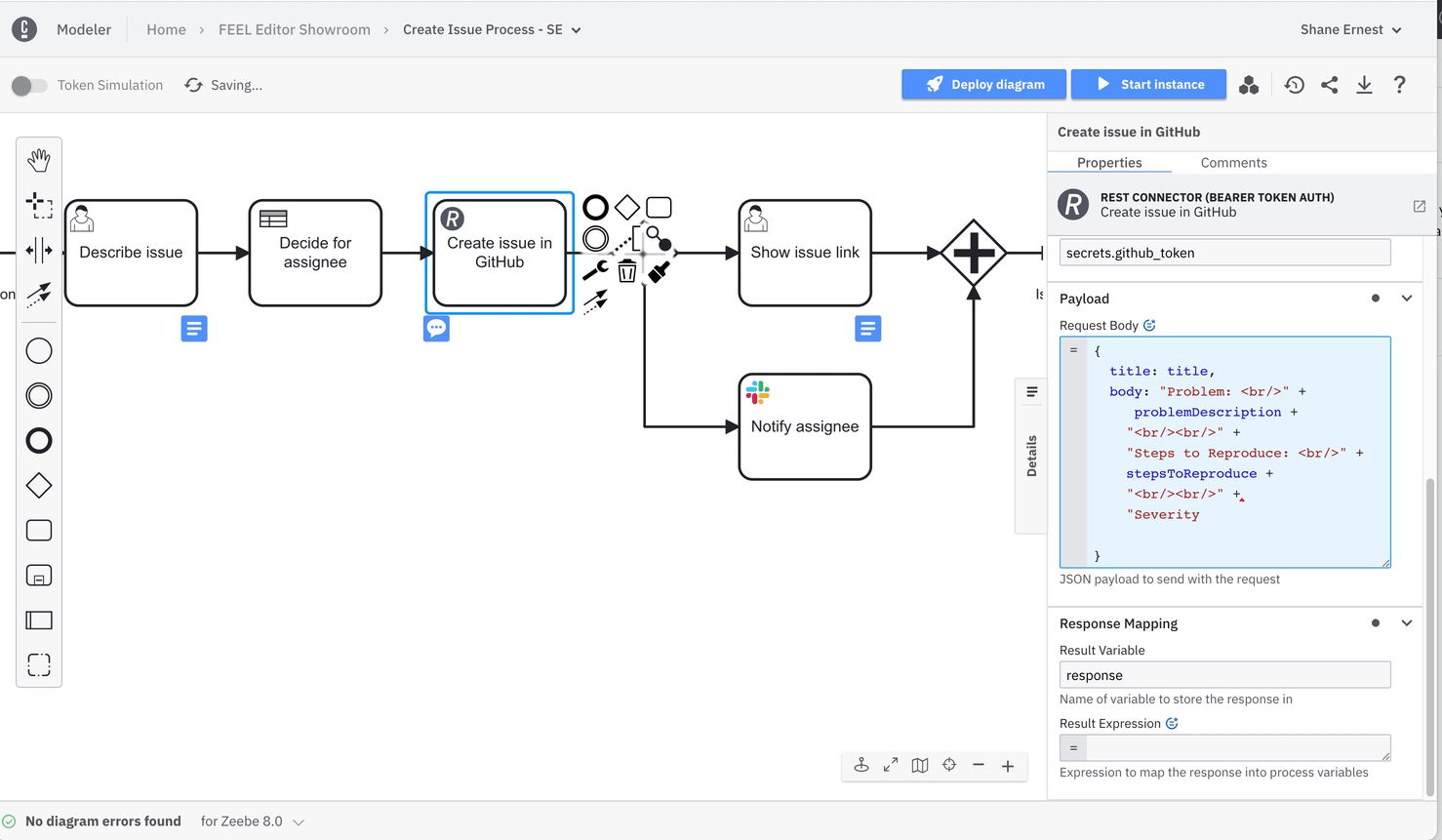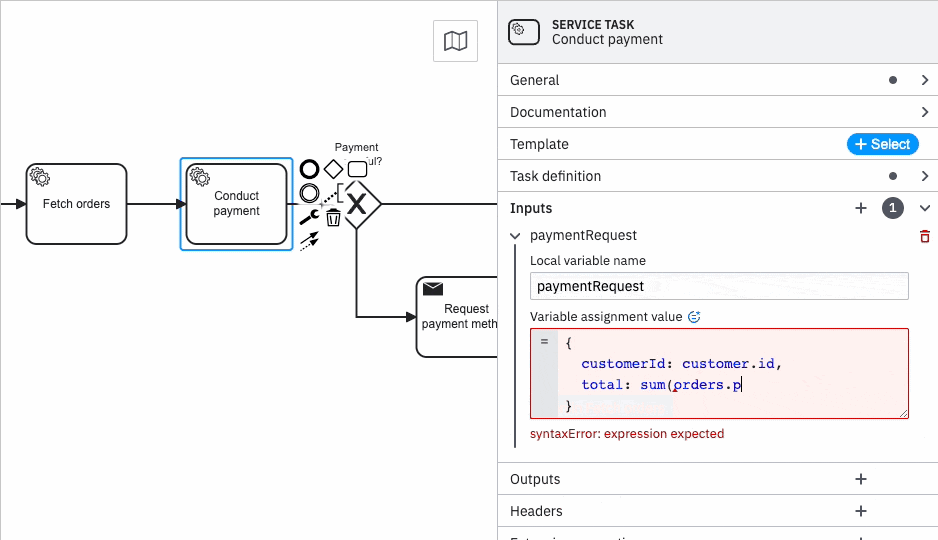FEEL (Friendly Enough Expression Language) was created by the Object Management Group (OMG) “as part of the DMN standard”. Its goal is to be easy to understand, and at the same time, be full-featured enough to handle decision tables and literal expressions. When business and IT often work together on complex projects, writing expressions in a (relatively) accessible way reduces miscommunications and helps align teams.
Camunda uses FEEL to map and transform business process data dynamically. For example, a loan application process pulls a credit score from an API call into a decision table. The decision table automates the next step of the process depending on the rules in the table. The data from the decision automation can then be embedded as a variable so that an application has all information in a single place and is passed along to the next task in the process.
While FEEL is “friendly-enough” by name it still has a learning curve, even if you’re familiar with the language. This post will highlight two new features we’ve released that help pro and low-code developers write accurate FEEL expressions with less effort. While this is our first dedicated investment into editor tooling for a specific scripting language, it’s only the beginning.
Write FEEL expressions with less effort
Learning curves are expected but can feel frustrating when you just need to get something done. Working with FEEL expressions is no different. While powerful and friendly, it could still take some research upfront or troubleshooting after deploying the process.
The new FEEL Expression Editor in Camunda Modeler helps technical and non-technical users write accurate FEEL expressions. It highlights errors in your code so you can quickly discover them before executing a process. The editor accurately formats FEEL expressions so you can focus on the logic and desired data outcome.
You’ll be able to map any data across different tasks in your process accurately and with less effort than before.

Let Intelligent Code Completion do the heavy lifting
Intelligent Code Completion offers an added layer of support that perfectly compliments our expression editor. The suggestions are based on best practices to help you modify and link specific variables in your process without manually looking up a particular property ID or variable.
With Intelligent Code Completion, you’ll be able to write accurate FEEL expressions on the first try, faster than before.
Gain more confidence writing expressions
FEEL is an incredibly powerful asset for any automation project. Having some technological support to write valid code to transform data will not only speed up your development project, but will also let you focus on the logic instead of language-specific subtleties. You’ll be more comfortable (and confident) that the data will flow and display as you intend.
Want to start writing and implementing FEEL expressions with less effort? Sign up for a free trial of Camunda Platform 8 today.

